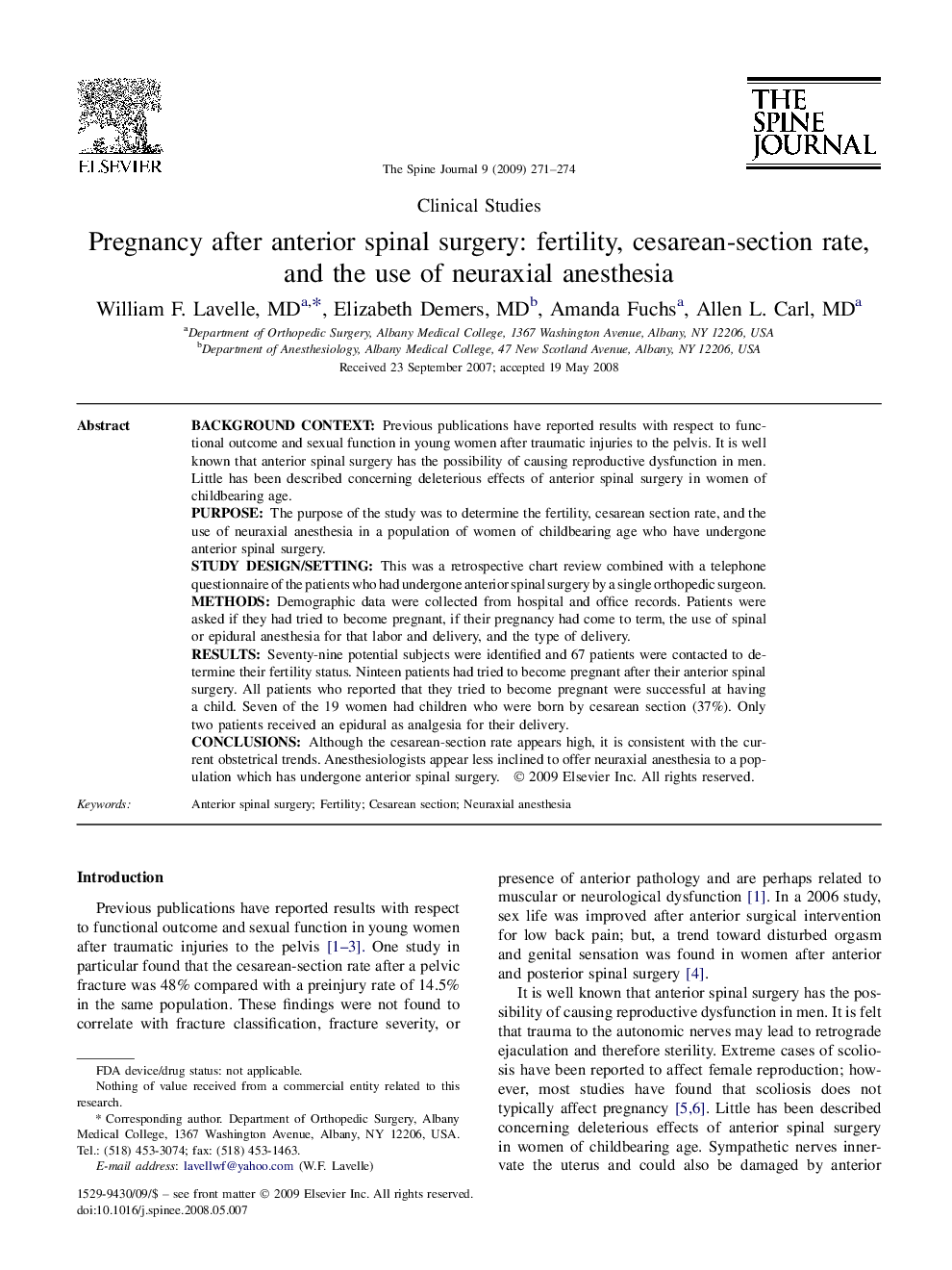| Article ID | Journal | Published Year | Pages | File Type |
|---|---|---|---|---|
| 4099700 | The Spine Journal | 2009 | 4 Pages |
Background contextPrevious publications have reported results with respect to functional outcome and sexual function in young women after traumatic injuries to the pelvis. It is well known that anterior spinal surgery has the possibility of causing reproductive dysfunction in men. Little has been described concerning deleterious effects of anterior spinal surgery in women of childbearing age.PurposeThe purpose of the study was to determine the fertility, cesarean section rate, and the use of neuraxial anesthesia in a population of women of childbearing age who have undergone anterior spinal surgery.Study design/settingThis was a retrospective chart review combined with a telephone questionnaire of the patients who had undergone anterior spinal surgery by a single orthopedic surgeon.MethodsDemographic data were collected from hospital and office records. Patients were asked if they had tried to become pregnant, if their pregnancy had come to term, the use of spinal or epidural anesthesia for that labor and delivery, and the type of delivery.ResultsSeventy-nine potential subjects were identified and 67 patients were contacted to determine their fertility status. Ninteen patients had tried to become pregnant after their anterior spinal surgery. All patients who reported that they tried to become pregnant were successful at having a child. Seven of the 19 women had children who were born by cesarean section (37%). Only two patients received an epidural as analgesia for their delivery.ConclusionsAlthough the cesarean-section rate appears high, it is consistent with the current obstetrical trends. Anesthesiologists appear less inclined to offer neuraxial anesthesia to a population which has undergone anterior spinal surgery.
